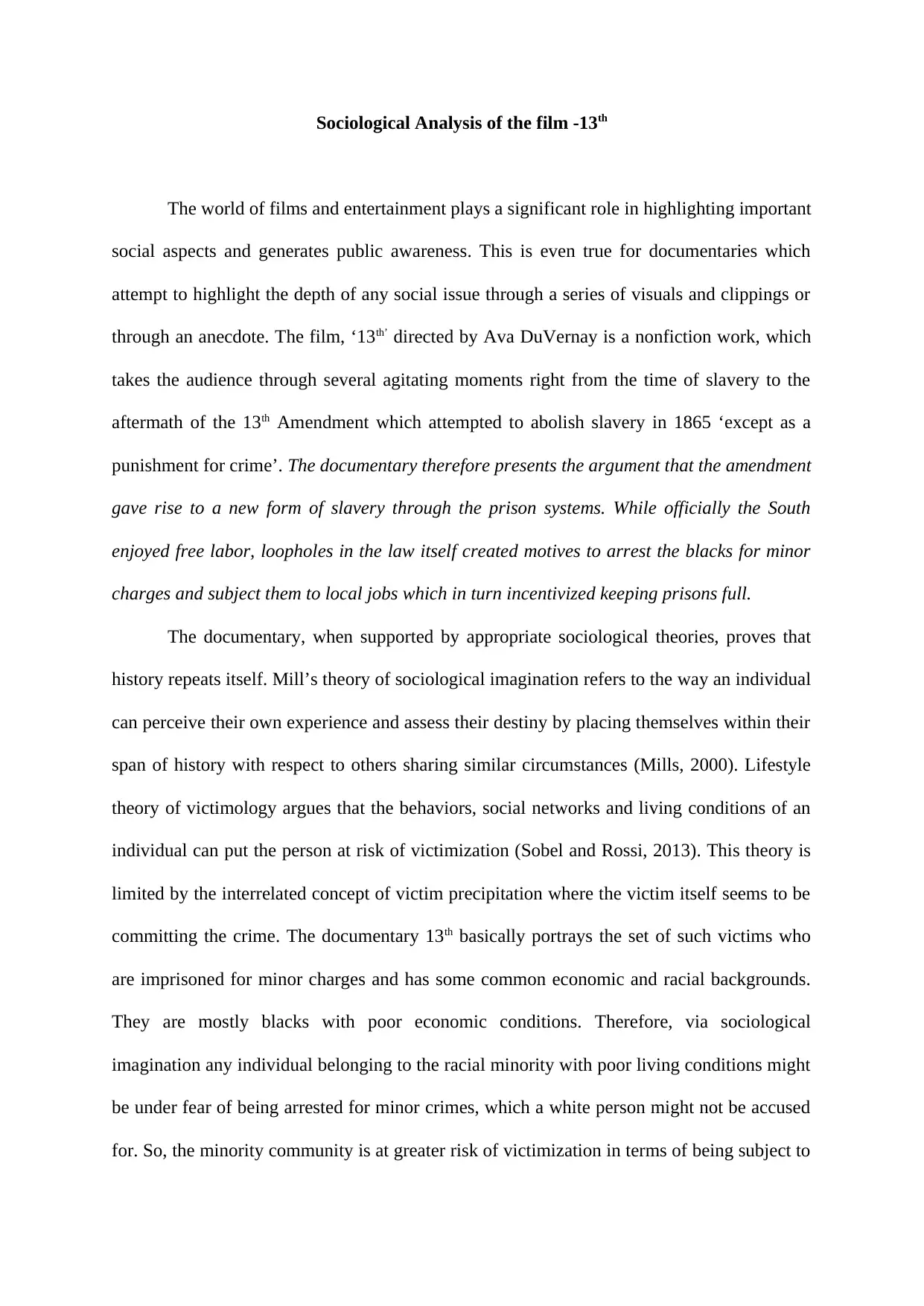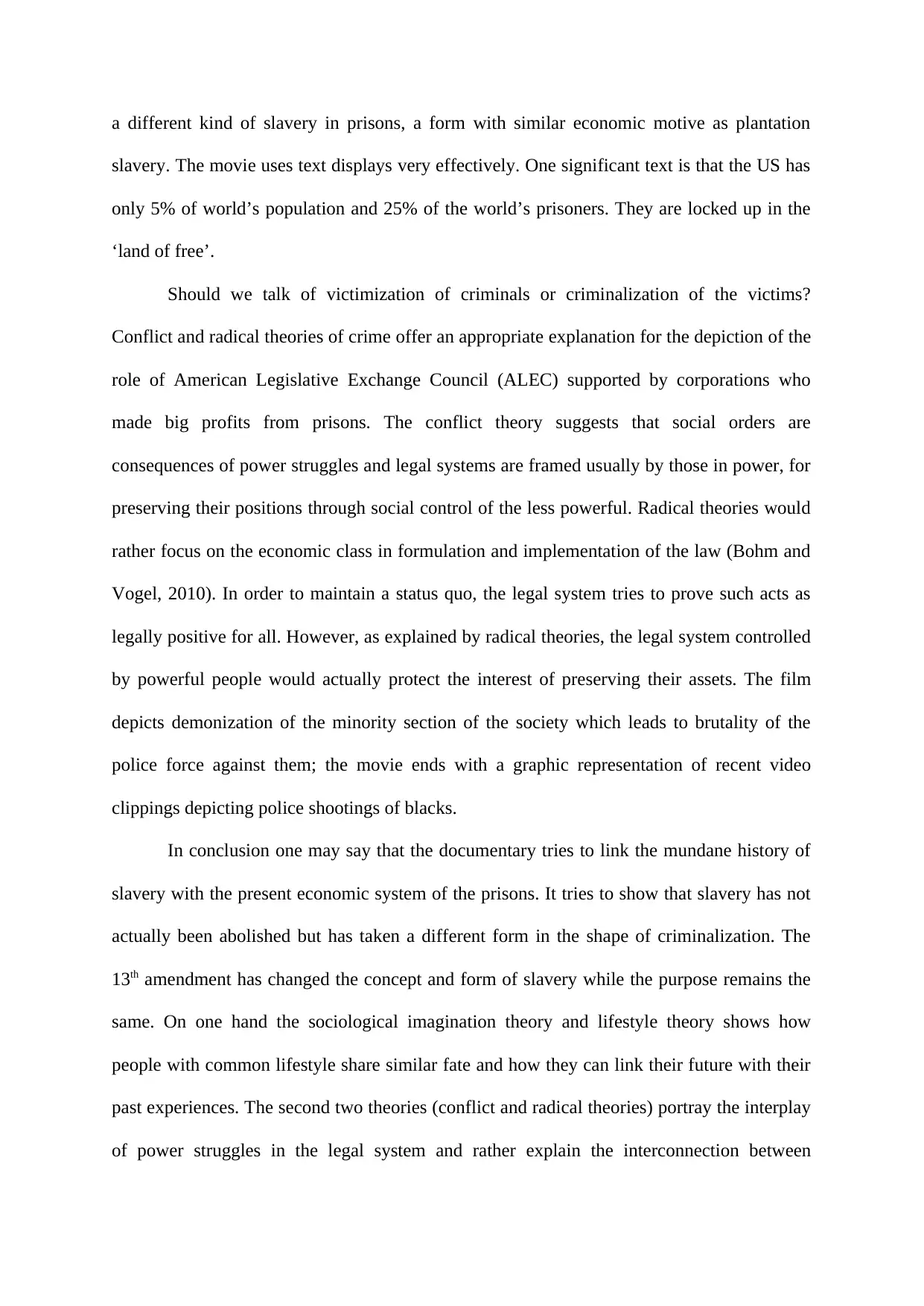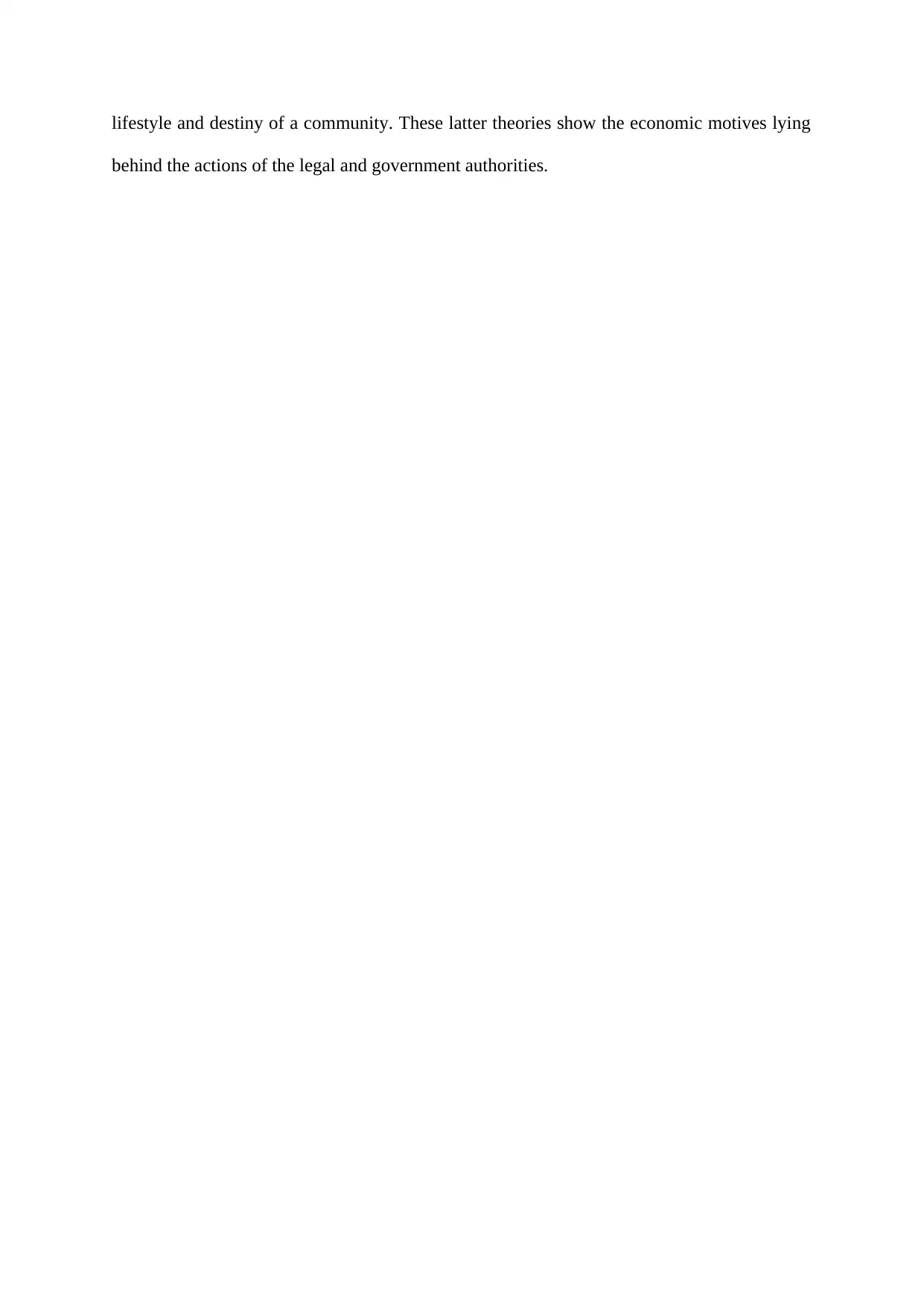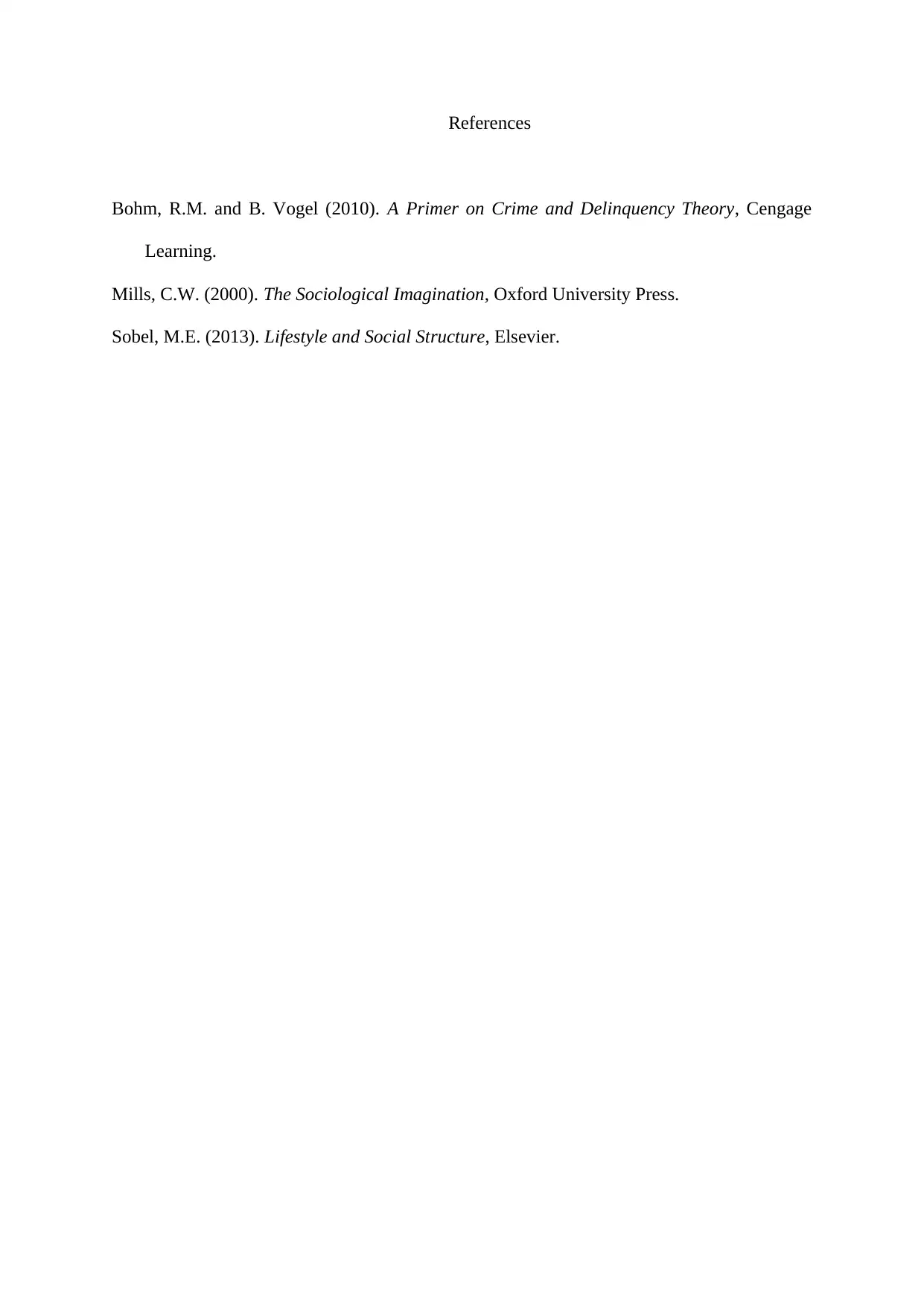Report: Sociological Analysis of the Documentary Film '13th'
VerifiedAdded on 2020/05/04
|4
|824
|330
Report
AI Summary
This report offers a sociological analysis of Ava DuVernay's documentary, '13th,' which examines the history of racial inequality and the criminal justice system in the United States. The analysis utilizes C.W. Mill's sociological imagination and lifestyle theory to explore how historical injustices, particularly slavery and its evolution through the 13th Amendment, have led to the over-incarceration of African Americans. The report also applies conflict and radical theories to understand the role of power dynamics and economic motives within the legal system and prison industrial complex, highlighting the perpetuation of systemic inequalities. The analysis considers the film's portrayal of the disproportionate impact of the criminal justice system on minority communities, and the film's depiction of police brutality. By examining these aspects, the report reveals how the documentary links historical patterns of oppression to contemporary issues.
1 out of 4





![[object Object]](/_next/static/media/star-bottom.7253800d.svg)